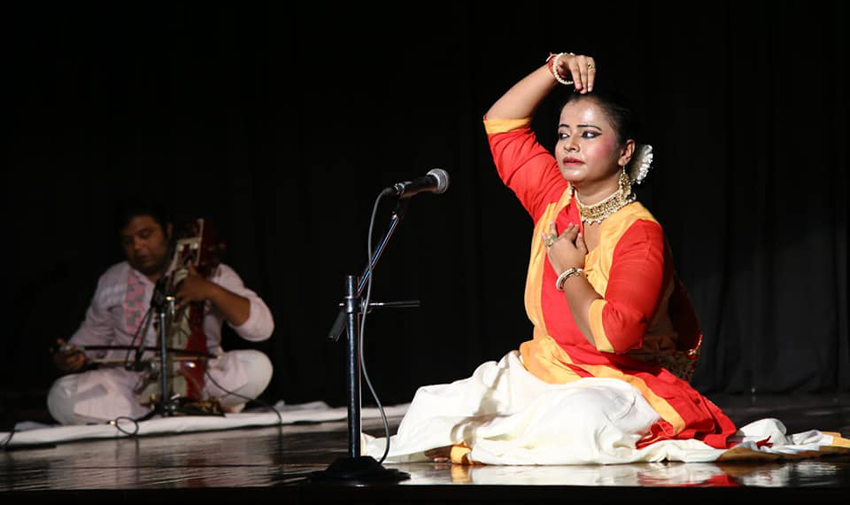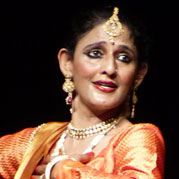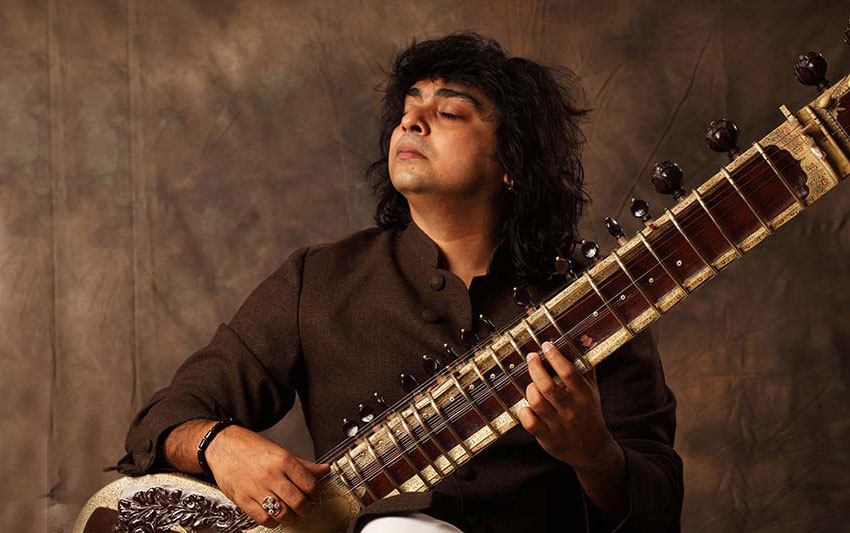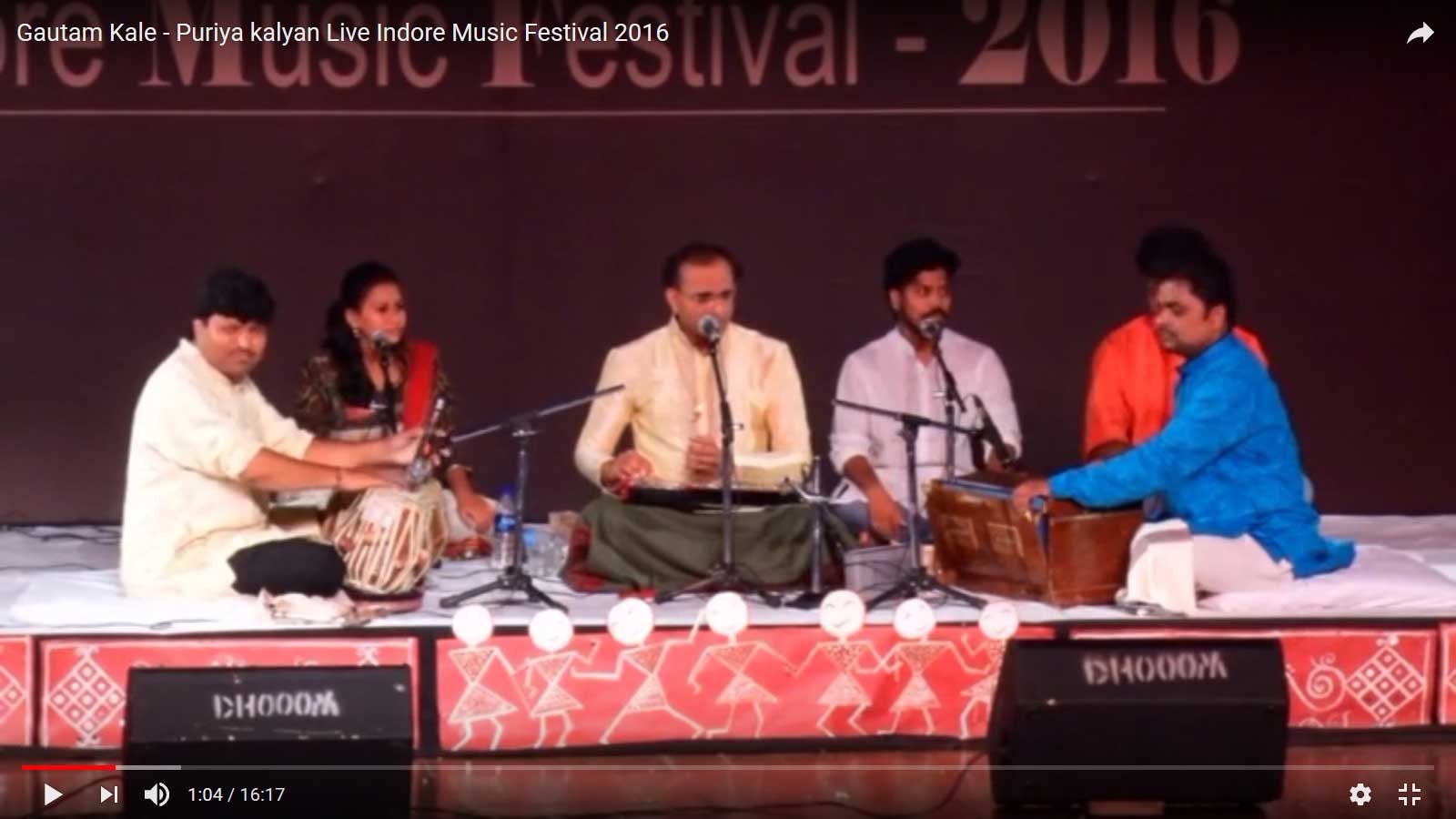The India International Centre (IIC) in New Delhi is intriguingly distinguished in the manner the institution crafts and presents in unequivocal manner programs that provide critiques on the happenings in the creative world. The Double Bill Concert is one of its recently launched series. A small committee reviews submitted material selects potential good dancers and musicians for monthly performances. Indrani Majumdar, program officer of the Centre responds “The Double Bill Concert appears to attract more audiences. Gradually, it is gaining a reputation that the artists will be good.” Within this frame, the performance of Kathak dancer Arunima Sengupta came as a whiff of fresh air.
Background – The Diminishing Solo Kathak Dance
The glitzy intervention of technical production comprising of designer lighting, costumes and recorded sounds distract audiences to camouflage mediocre dance content, technique and emerging signature creativity. Changing cultural economics has seen a greater presence of private organizers who collect loads of sponsorship money and on several occasions compel young solo performers to either perform on recorded music or pay to perform. The private and the government patrons dominatingly insist on group choreographies, and on recorded music. As a result, potentially good solo dancers are reluctant to commit being soloists. This feature has reduced the anchoring character of the Kathak Dance- upajor impromptu creation both in the realm of Mimetic art of Abhinaya and the Nritt (technical section dictated by feet and body movement woven in rhythmic patterns of time). But most of all the overwhelming circumstance of social media has had significant effects on Indian Classical Dance.
Stereo Perception of a Contemporary Kathak Solo Performance
Today, solo Kathak is largely reduced to a trailblazer of high spirited body movement, footwork. The rococo affair is raised to the next level by designer lighting, costumes. The hype for such a product of Kathak dance is then captured in savvy videos and marketed in the hungry capitalist market.
The forte of solo dancing whose seminal identity is traditionally anchored in a distinct manner by an impromptu creation in rhythm and in abhinaya (mimetic art) is displaced and reduced by memorized dance. The reduction is covered-up by designer technical presentations.
Secondly, with the reduction of the solo Kathak, the demand by market forces is group choreography. This implies that instead of journeying both mentally and emotively with one body; the audience now is witness to a spectacle of dynamics of a group of bodies that move packaged in sophisticated lighting and costumes.
A Hope
For one moment only when Chakkars (pirouettes), lighting and costumes are curtailed, the veil of unravelled talent of the dancer is illustrated. It is against this hypothetical frame that one reviews the recent performance of Arunima Sengupta.
Arunima, not only established the tone of her mood, stage presence right in the beginning but was able to sustain the momentum throughout her one hour program. When she entered, her actions created a frame when she moved looking for syllables of both rhythm and music as if to cut time in space. It was a relief not to see the usual display of explosive taiyaaree or empowered footwork play. Her entry was in silence without designer lighting, the dance along stood.
Creative Inputs
It is the creative inputs in a solo performance that marks the growth of an individual performer. Arunima’s performance displayed such flashes.
Kathak is the only Indian Classical dance, where you have tools to enact a mimetic dramatic piece without using music or poetic words. Two of these tools are called Gat-Nikas and Gat-Bhav.
In the Gat-Nikas, the dancer takes half turns (paltaa) and amidst the weave of the rhythmic cycle suddenly arrives in a pose and stands still; the chosen pose is about a symbol or a concept. The symbol could be ruksaar (cheek), Ghunghat (the veil), talwaar (the sword), Husna (beauty), Meen(fish). In the second part, the dancer uses the technique of a gait (chaal) to capture and elaborate on the essence of the chosen symbol.
The second tool of abhinaya in rhythm in Kathak is called Gat-Bhav. A technical composition that elaborates a situation or tells a story. Here too there is chaal (gait) a technique used to represent different characters in the story.
Arunima, brought in a new feature where she actually used poetry in the Ghat-Bhav. The situation/story was Shringaar gat-bhav (the story of a woman adorning herself). The performer carefully chose to factor in worded poetry. Enacting, she sat down and opened her cosmetic box. Facing her reflection in the mirror, the dancer recited a beautiful poem elaborating thoughts on identity and empowerment. She then rose and performed the gait (chaal). The entire ethos of the adornment took a new turn.
The other feature which displayed the potential of a promising soloist was the treatment of the evocative recorded thumri by late Joita Pande,”Mora Saiyan Bulaave aadhi raat.” (My beloved beckons me at midnight). In Kathak, the freedom and the technique to expand the central essence called the stayi Bhav is created by upaj (impromptu creative performance) that displays the measure of an artist’s creativity. The technical word used is ‘kholna’ to open the essence. The performer is expected through metaphors and images take the audience on a flight, as she evolves into the performer-writer much beyond to what is sung and written. Very, very, few Kathak dancers know or attempt or even do this special technical science of abhinaya in Kathak.
Arunima, however, successfully illustrated the technique. She held on the theme of ‘waiting’ that was central to the chosen song – until she meets her lover. The performer depicted fresh images illustrative of home chores; nonetheless, the most reminiscent was the manner she showed stitching a cloth. Her hands moved to pick up stitched in a manner that the action became connected to the mental image of crossing the river to meet her lover. The audience though less in number were travelling the journey, and when finally the moment to meet arrived; the river had risen, a reluctant boatman and a rickety boat awaited the heroine. The graphic painting of the theme of waiting, of patience, held the audience in a magical web of quiet expectancy – a sense aptly captured by Emily Dickenson – “Since then – ’tis Centuries – and yet, Feels shorter than the Day”.










